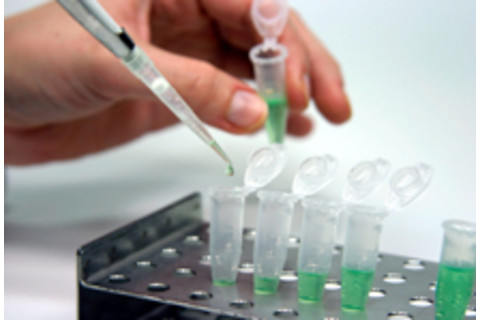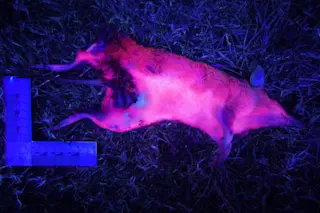
By tweaking chemical strands of RNA, researchers have taken another step towards understanding how life may have first evolved on our planet.
A test tube based system of chemicals that exhibit life-like qualities such as indefinite self-replication, mutation, and survival of the fittest, has been created by US scientists.... "This is the very end of the line, where chemistry starts turning into biology" [Chemistry World]
, says researcher Gerald Joyce. Researchers have previously created RNA strands that replicated themselves for a while before grinding to a halt, but this experiment marks the first creation of RNA strands that continue to replicate themselves indefinitely, which set up the conditions that allowed for evolution.
In the modern world, DNA carries the genetic sequence for advanced organisms, while RNA is dependent on DNA for performing its roles such as building proteins. But one prominent theory about the origins of life, called the RNA World model, postulates that because RNA can function as both a gene and an enzyme, RNA might have come before DNA and protein and acted as the ancestral molecule of life [Astrobiology Magazine].
In the experiment, reported in Science [subscription required], Joyce and his graduate student Tracey Lincoln set out to test the RNA World hypothesis. They created pairs of enzymes that can only reproduce with each other's help, and set them swimming in a pool of RNA fragments that the enzymes could use to build new strands. The enzymes got busy replicating, but sometimes an enzyme would make a mistake as it assembled a strand and a "mutation" would arise.
Most of these mutations went away quickly, but — sound familiar? — some of the changes ended up being advantageous to the chemicals in replicating better. After 77 doublings of the chemicals, astounding changes had occurred in the molecular broth. "All the original replicators went extinct and it was the new recombinants that took over," said Joyce. "There wasn't one winner. There was a whole cloud of winners, but there were three mutants that arose that pretty much dominated the population" [Wired News].
But experts say this experiment doesn't settle the question on the origin of life on Earth, as some unknown type of self-replicating molecule must have preceded the RNA strands. Related Content: 80beats: Devastating Meteorite Strikes May Have Created Earth’s First Organic Molecules 80beats: New Results from a 1953 Experiment Offer Hints to the Origin of Life 80beats: The Earth’s Oldest Diamonds May Show Evidence of Earliest Life DISCOVER: Did Life Evolve in Ice? DISCOVER: The Soak-and-Bake Origin of Life DISCOVER: The First CellImage: iStockphoto













